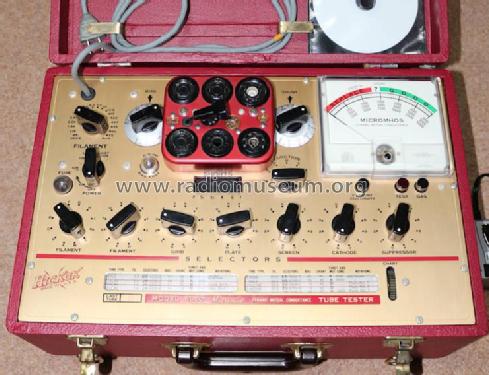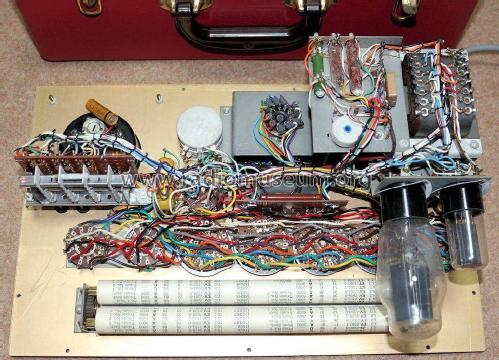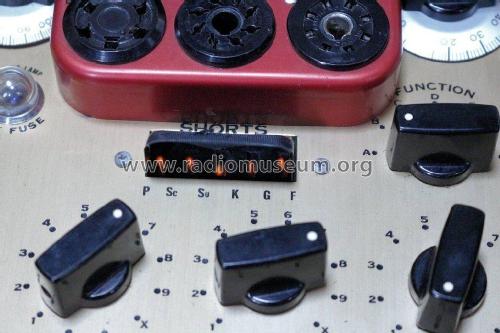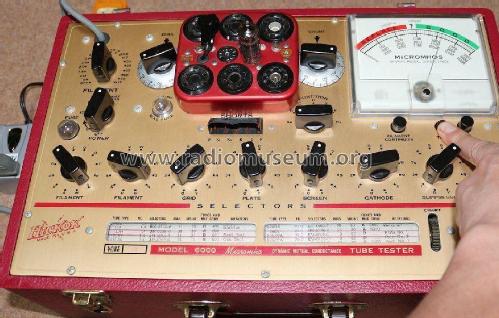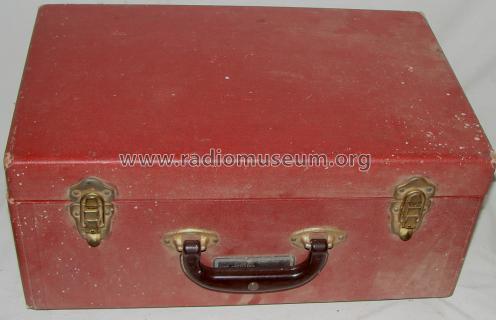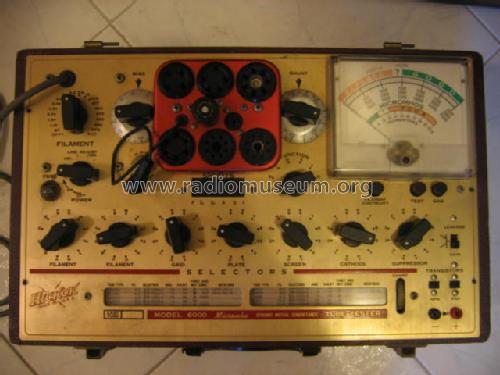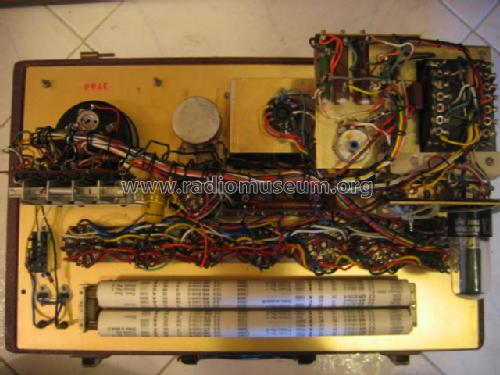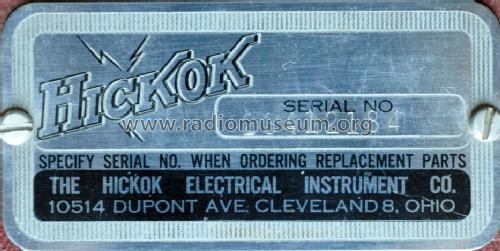Tube Tester 6000
Hickok Electrical Instrument Co.; Cleveland, OH
- Produttore / Marca
- Hickok Electrical Instrument Co.; Cleveland, OH
- Anno
- 1957–1962
- Categoria
- Strumento da laboratorio
- Radiomuseum.org ID
- 113444
-
- alternative name: Hickock
Clicca sulla miniatura dello schema per richiederlo come documento gratuito.
- Numero di tubi
- 2
- Gamme d'onda
- - senza
- Tensioni di funzionamento
- Alimentazione a corrente alternata (CA) / 110 Volt
- Altoparlante
- - - Nessuna uscita audio.
- Materiali
- Mobile in legno
- Radiomuseum.org
- Modello: Tube Tester 6000 - Hickok Electrical Instrument
- Forma
- Soprammobile a cassapanca o cassetta, solitamente con coperchio (NON a leggio)
- Dimensioni (LxAxP)
- 265 x 185 x 425 mm / 10.4 x 7.3 x 16.7 inch
- Annotazioni
- Vereinfachtes Modell des 600; kleiner und leichter gebaut, für Servicezwecke.
- Peso netto
- 7.3 kg / 16 lb 1.3 oz (16.079 lb)
- Bibliografia
- Alan Douglas, Tube Testers and Classic Electronic Test Gear
- Altri modelli
-
In questo link sono elencati 148 modelli, di cui 132 con immagini e 42 con schemi.
Elenco delle radio e altri apparecchi della Hickok Electrical Instrument Co.; Cleveland, OH
Collezioni
Il modello Tube Tester fa parte delle collezioni dei seguenti membri.
Discussioni nel forum su questo modello: Hickok Electrical: Tube Tester 6000
Argomenti: 1 | Articoli: 10
Gentle tube enthusiasts,
together with fellow Dale Spear, I am working on a project which involves good knowledge of the circuitry and theory of operation of 6000, 6000A and 6005 tube testers.
I have three main concerns:
1) the user's manual states that the seven sockets' contact dials have fourteen positions. However, other literature mentions twelve positions. Do they perhaps have two "standby" (= disconnected) positions, which would solve the discrepancy?
2) I particularly seem to have problems with dial 2. It should be marked 1-2-3-R-S-T-U-V-W-X-Y-Z but in the tube charts I consistently find as well a P position. Which socket's contact is connected when it is turned in P position, or which other operation is performed?
3) The "FUNCTION" switch is said to have eight positions. However, the positions used in tube testings seem to be only five: A-B-C-D and F. As long as I understand, A is used for amplifiers' tests, C for diodes' tests and D for rectifiers' tests. But I couldn't find any literature on what B and F functions are used for and what they specifically do. Does anyone have any clue?
Thanks for reading.
Marco Gilardetti, 09.Oct.09


